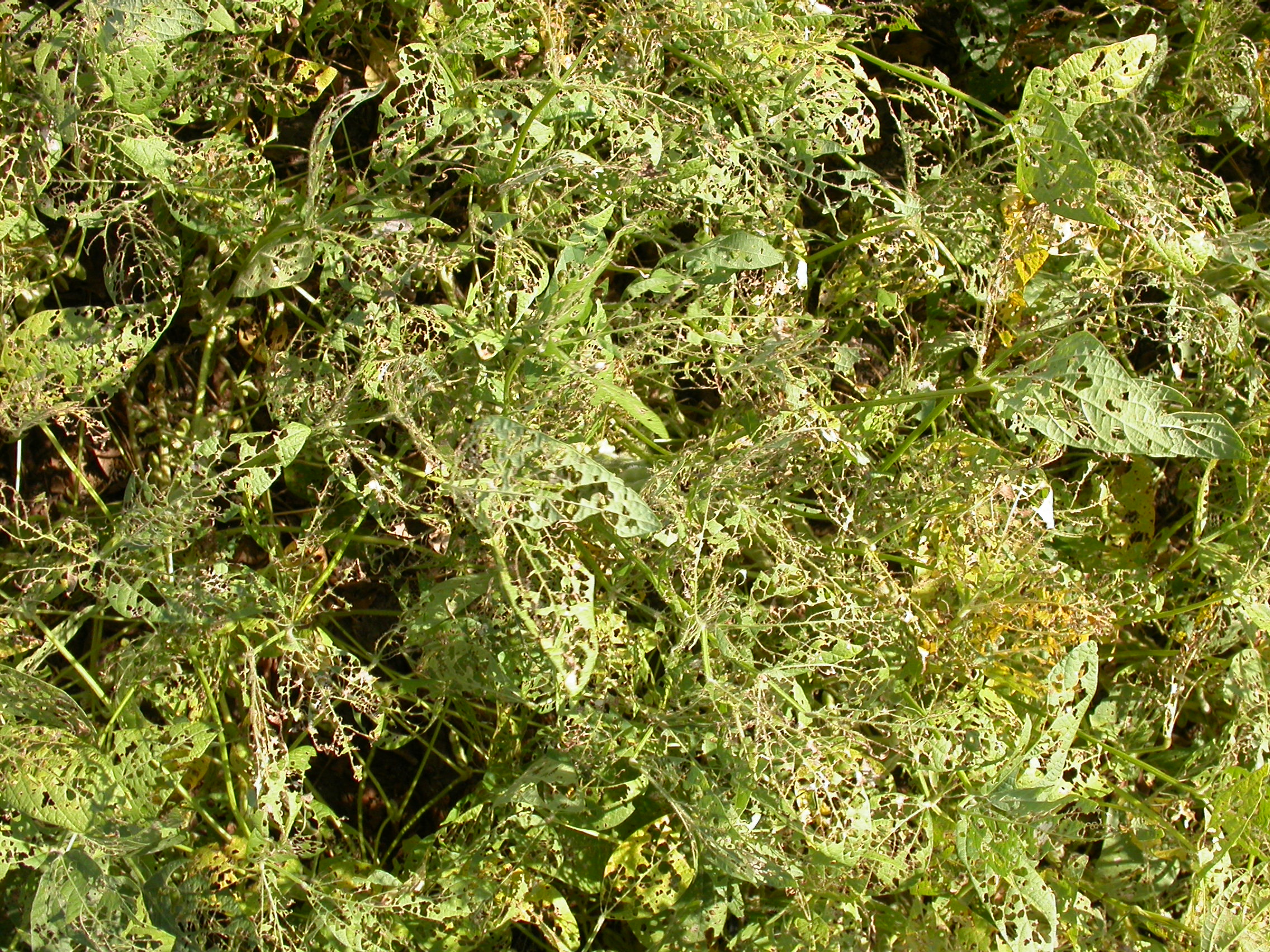Soybeans in parts of North Carolina, especially in their eastern ‘Blacklands’, have been plagued by soybean looper infestations for a few weeks. I got the first report of infestations on our Eastern Shore earlier this week, and today, I got a report of a field hit in Southampton County.
Soybean loopers follow a pattern that we have seen in the past. They do not overwinter in Virginia so moths must migrate in from the south. Adult moths are transported short or long distances by weather fronts. It is not uncommon to find a few soybean loopers in any given field, any time during the season. But it is fairly uncommon to have large flights. The pattern that I have seen, and the one that is playing out this year is that when large populations build up to our south, moths are transported to our area in large numbers—and—most commonly in mid-September.
Another important factor to be aware of is that almost invariably, these large flights result in large worm outbreaks IN FIELDS THAT HAVE BEEN PREVIOUSLY TREATED WITH PYRETHROIDS. Our current research is showing that pyrethroids are hard on beneficial insects and spiders that feed on looper eggs and small worms. If destroyed, a much larger percentage of looper eggs hatch and a larger percentage of worms survive.
So, if a looper infestation is discovered in a field, what is the threshold and what products provide the best control. We do not have a threshold for loopers but lump them into a general leaf defoliators ‘guild’ which can include many leaf eaters (Japanese beetles, green cloverworms, grasshoppers, bean leaf beetles and others)—and base a treatment decision on the total leaf area destroyed by the guild. We recommend not treating fields with fully developed seed unless 35-40% of the leaf area is eaten and bugs are still present.
We also know that soybean looper is a unique pest in that large numbers can completely defoliate a field in a short period of time, in as few as 5-7 days if numbers are really high. So here is a looper rule-of-thumb. Treat if you get 12-15 or more in 15 sweeps and the field has not reached full pod maturity (pods yellowing and seed getting hard).
Do not use a pyrethroid for loopers. These critters are hard to kill and the best success will be with non-pyrethroids like Belt at 3 oz, Prevathon at 14 oz, or Besiege at 10 oz. Other products that contain sinosad may also be effective.


Pingback: Agronomic Crop Insects – September 12, 2014 | Weekly Crop Update – Cooperative Extension in Delaware